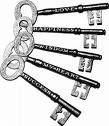
In Part 1 I mentioned that most teachers start a new class with a desire for the class to grow and for others to experience great teaching and relationships. Before long, busyness fills a teacher’s time leaving little for class growth activities beyond preparation for another lesson. Revolutionary leaders prioritize growth actions. This five-part series addresses key actions which contribute to class growth.
What are some of the actions necessary for Sunday School class growth? In Part 1, Part 2, and Part 3, nine actions have been shared: reaching out, reaching in, meeting needs, leading, keeping good records, following up, adding worshipers to the prospect list, setting and pursuing goals, and involving everyone. In Part 4, we will look at consider three more actions:
- CONDUCTING FELLOWSHIPS AND PROJECTS. Fellowships and projects should involve members, absentees, and prospects. Fellowships are for relationship-building, affinity-discovery, and fun. Mission/ministry/outreach projects connect some people who hate socials. Project planning and conducting brings experiences and relationships not possible through socials. Ideally projects would focus the class upon the needs of people outside of the class and church. From my experience over the years, I believe a mix of fellowships and projects is best–perhaps two fellowships and one project per quarter. Grow your class through consistently involving your attenders and prospects in fellowships and projects!
- PRAYERFULLY PREPARING AND TEACHING WELL. Poor teaching can run off the efforts of great reaching. Give God and your class your best effort in prayerful preparation and teaching. Use a variety of methods to meet the varied learning styles of members of your class. Use icebreakers and break the group into smaller groups to increase involvement. Use good questions. Capture the attention of members and guests. Lead attenders to understand the main truth and apply it to their lives every time! Grow your class through consistently prayerfully preparing and teaching well. For more ideas, check out these posts: Wisely Choosing Sunday School Teaching Methods, Part 1, Wisely Choosing Sunday School Teaching Methods, Part 2, Benchmarks for Excellence in Sunday School Teaching, Part 1, Benchmarks for Excellence in Sunday School Teaching, Part 2, Benchmarks for Excellence in Sunday School Teaching, Part 3, Why Is There No Variety of Teaching Methods in Sunday School?, Improve Yourself, Improve Your Teaching, Four Ingredients of an Interesting Sunday School Class, Part 2, Pray, Plan, and Prepare to Teach Sunday School for Lives to Change, Part 2, How to Teach Them to Obey: By Example, Learning Styles in Adult Sunday School, and Sunday School Teacher Tips, Part 1.
- PROVIDING ENOUGH SPACE, FURNISHINGS, AND EQUIPMENT. When space is filled to 80% of capacity, growth will tend to slow or stop. Provide enough space for the class to grow and make sure you have enough space to start a new class. Plan ahead so you don’t run out. Create a positive first impression by keeping your space clean, well-lit, comfortable, and without distractions. Make sure furnishings and equipment are appropriate for the age group(s) that use(s) the space. Also, ensure that there are not too many furnishings and too much equipment. Grow your class through consistently providing enough space, furnishings, and equipment!
Evaluate your class. Which of these three is best done by your class and which needs strengthening? What can you do this week to take steps toward improving the area in need of strengthening? Who can help you with that key action? Review Part 1, Part 2, and Part 3 to consider the nine previous key actions. In Part 5, we will look at the final three key actions: training an apprentice and starting a new class; positively handling conflict; and praying together. Fellowship. Do projects. Pray. Prepare and teach well. Provide space, furnishings, and equipment. Grow. Be revolutionary!
Leave a Reply